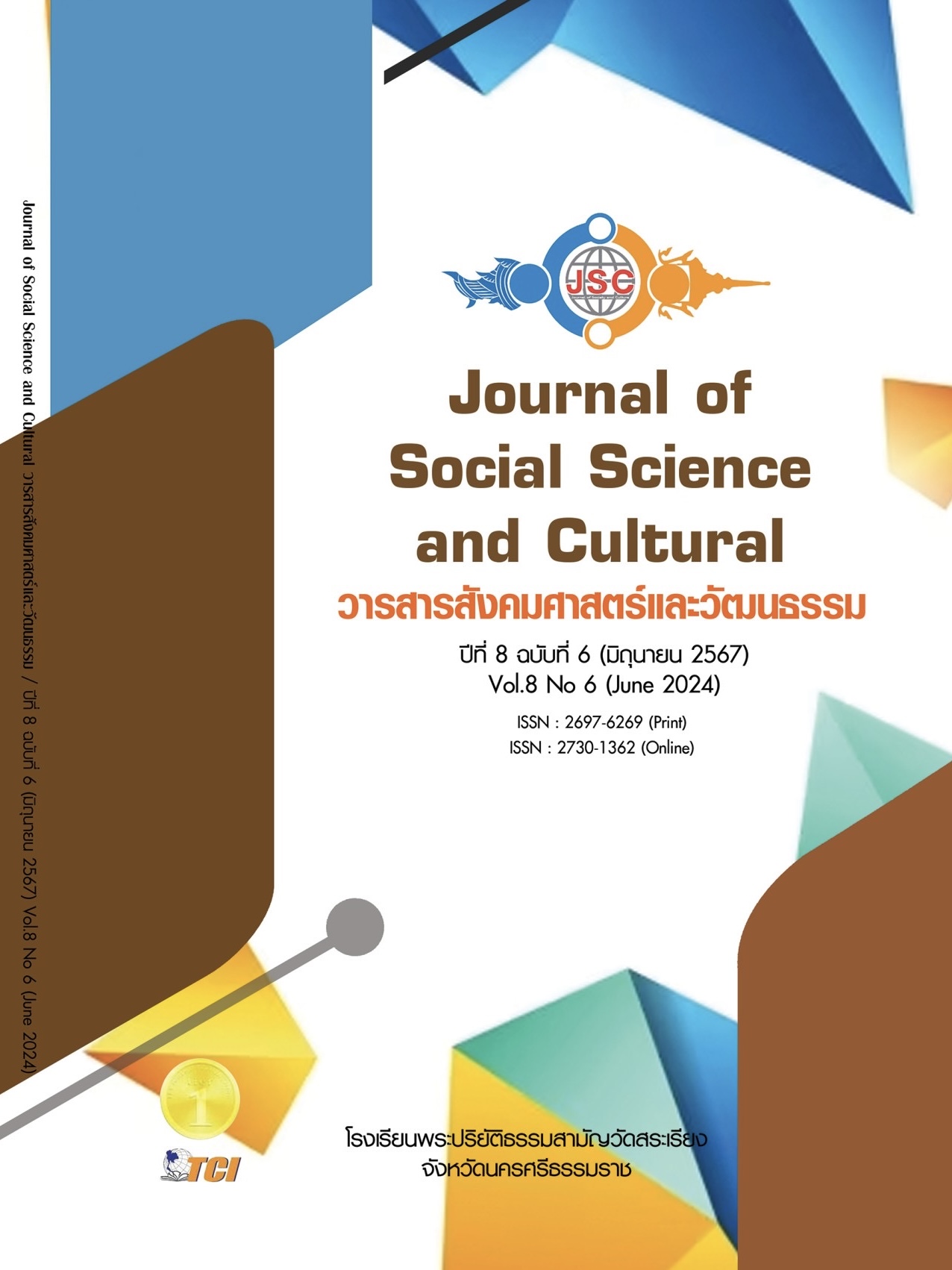CHARACTERISTICS AND BENEFITS OF WISDOM FOR EYE CARE
Main Article Content
Abstract
This research article aims to 1) study the characteristics of traditional wisdom in eye care and 2) analyze the benefits of traditional wisdom in eye care. This was a qualitative research with key informants including 89 community scholars and people knowledgeable about traditional wisdom using purposive sampling. The tool used to collect data was a structured in-depth interview with questions about the thinking base and knowledge characteristics of eye care wisdom. Data analysis used content analysis and data reliability checking using data triangulation. The results found that traditional wisdom in eye care is medical science or alternative therapy techniques for eye care, classified into 4 groups: 1) indications 2) using herbs to care for eye health through various methods, including eating, compressing on the eyelids. and compressing the toes that affect the eyes 3) facial massage, head massage and 4) using concentration and vision. Benefits of traditional wisdom in eye care slow down the deterioration of the eyes by stimulating blood circulation nourishing eye tissue and relaxation of eye muscles. Currently, these wisdoms are still being used all over the country and are beneficial in their use that are consistent with the criteria for considering alternative medicine, including reliability, safety, effectiveness and value. There should be a study of treatment mechanisms that can be explained using the process of searching for answers and considering the appropriateness of the time period in the stage of the disease in order to be used as wisdom in eye care in parallel with modern medicine.
Article Details
References
กรมผู้สูงอายุ. (2564). โรคตาในผู้สูงอายุ. เรียกใช้เมื่อ 25 เมษายน 2567 จาก https://www.dop.go.th
จรินทร์ธร ฟักคำ และคณะ. (2564). การดูแลสุขภาพด้วยภูมิปัญญาท้องถิ่นในเขตพื้นที่อำเภอหล่มสัก จังหวัดเพชรบูรณ์. วารสารหมอยาไทยวิจัย, 7(2), 125-135.
เทวัญ ธานีรัตน์. (2567). การแพทย์ทางเลือก คืออะไร. เรียกใช้เมื่อ 13 พฤษภาคม 2567 จาก http://www.msdbangkok.go.thMedicine.htm
ธรรมทัศน์ ธรรมปัญญวัฒน์. (2567). ช่องว่างการเข้าถึงบริการของผู้สูงอายุ. เรียกใช้เมื่อ 13 พฤษภาคม 2567 จาก https://prachatham.com
ปวริศา ทันเจริญ. (2566). ประสบการณ์เกี่ยวกับการฟื้นฟูสภาพจากสายตาเลือนรางของผู้ที่มีความบกพร่องทางการมองเห็นแผนกผู้ป่วยนอกจักษุโรงพยาบาลธรรมศาสตร์เฉลิมพระเกียรติ. วารสารโรงพยาบาลธรรมศาสตร์เฉลิมพระเกียรติ, 8(2), 31-43.
ปัญญเดช พันธุวัฒน์ และคณะ. (2562). กระบวนการถ่ายทอดทางสังคมด้านภูมิปัญญาท้องถิ่นในการดูแลสุขภาพตนเองของผู้สูงอายุ. Journal of Multidisciplinary in Social Sciences, 13(1), 149-270.
ภุชงค์ เดชอาคม. (2564). ระบบไหลเวียนเลือด กายวิภาคศาสตร์และสรีรวิทยา. กรุงเทพมหานคร: บริษัทนานมีบุ๊คส์.
ราชวิทยาลัยจักษุแพทย์แห่งประเทศไทย. (2567). ประกาศเรื่องการรักษาโรคกลุ่มต้อลมและต้อเนื้อด้วยการบ่งต้อด้วยหนามหวาย. เรียกใช้เมื่อ 13 พฤศภาคม 2567 จาก https://web.facebook.com/RCOPThailand
โรงพยาบาลจุฬารัตน์ 9 แอร์พอร์ต. (2567). เรื่องของดวงตาสำคัญต้องหมั่นสังเกตอย่าชะล่าใจ. เรียกใช้เมื่อ 13 พฤษภาคม 2567 จาก https://ch9airport.com/th
ศลิษา ฤทธิมโนมัย และคณะ. (2567). ปัจจัยที่มีผลต่อการเข้าถึงอุปกรณ์ช่วยเหลือผู้สูงอายุ: การวิเคราะห์ผลการสำรวจประชากรสูงอายุในประเทศไทย พ.ศ. 2545-2560. วารสารวิจัยระบบสาธารณสุข, 18(1), 109-135.
สามารถ ใจเตี้ย และณัทธร สุขสีทอง. (2565). ภูมิปัญญาพื้นบ้านล้านนา: การปฏิบัติเพื่อการสร้างเสริมสุขภาพผู้สูงอายุ. วารสารศิลปศาสตร์ มหาวิทยาลัยธรรมศาสตร์, 22(2), 242-259.
อายุพร ประสิทธิเวชชากูร. (2557). สุขภาพทางเลือกกับมุมมองในการพิจารณาเลือกใช้ที่ไม่ควรมองข้าม Alternative Health and Perspective to Select without Overlook. วารสารพยาบาลทหารบก, 15(3), 38-43.


